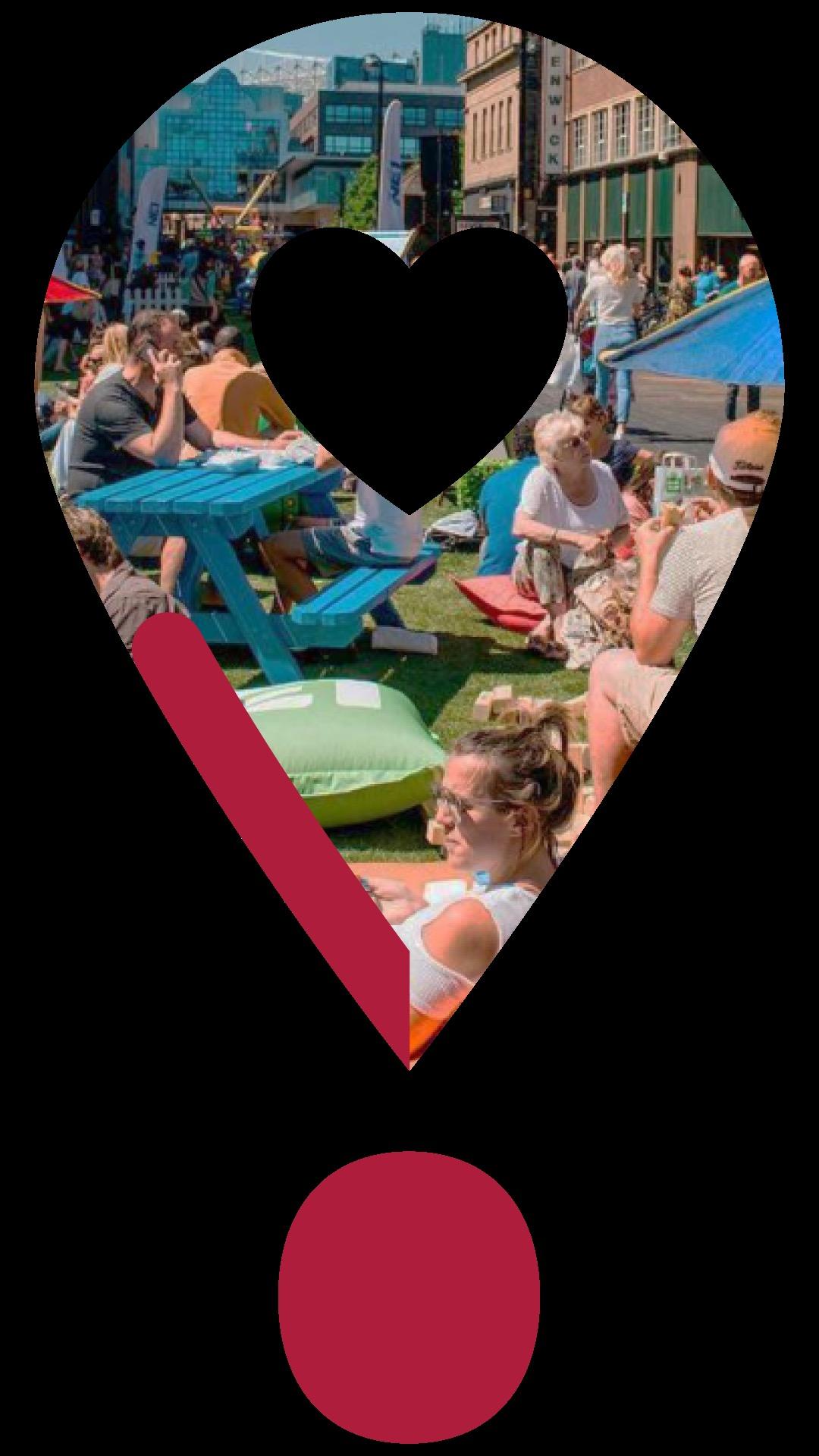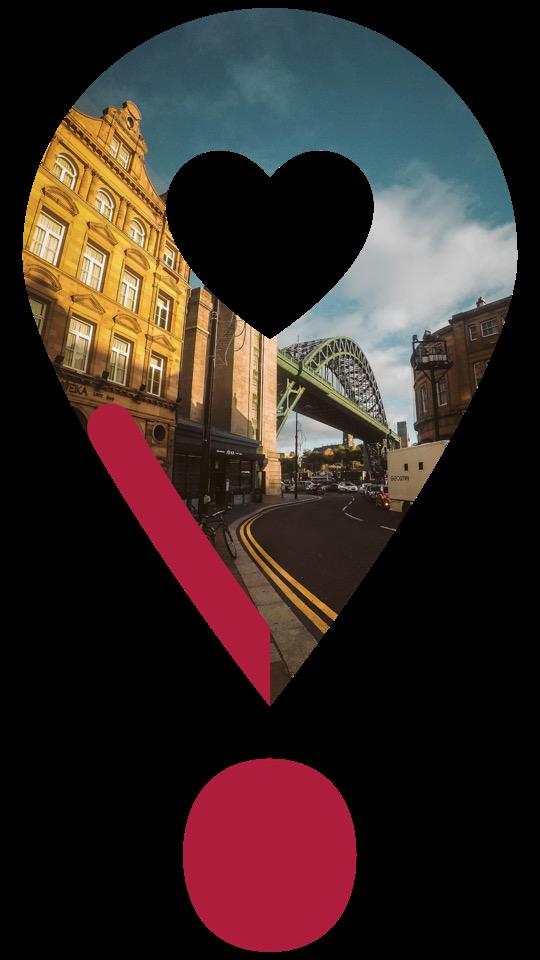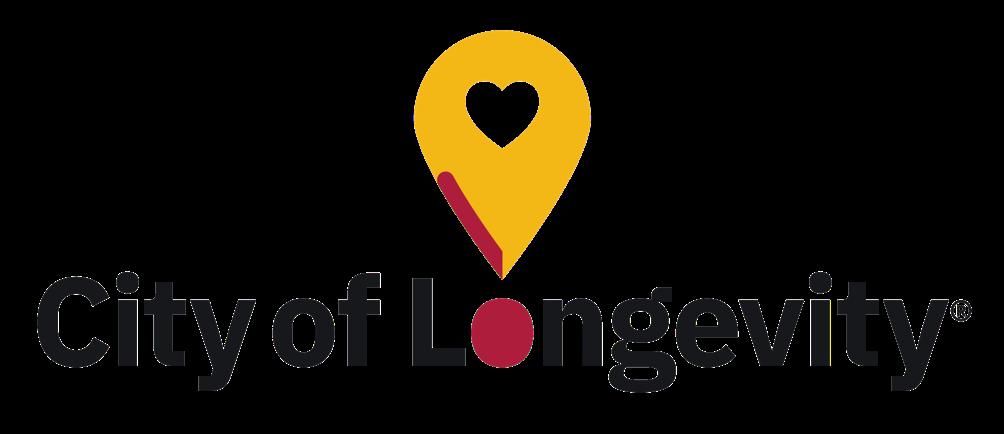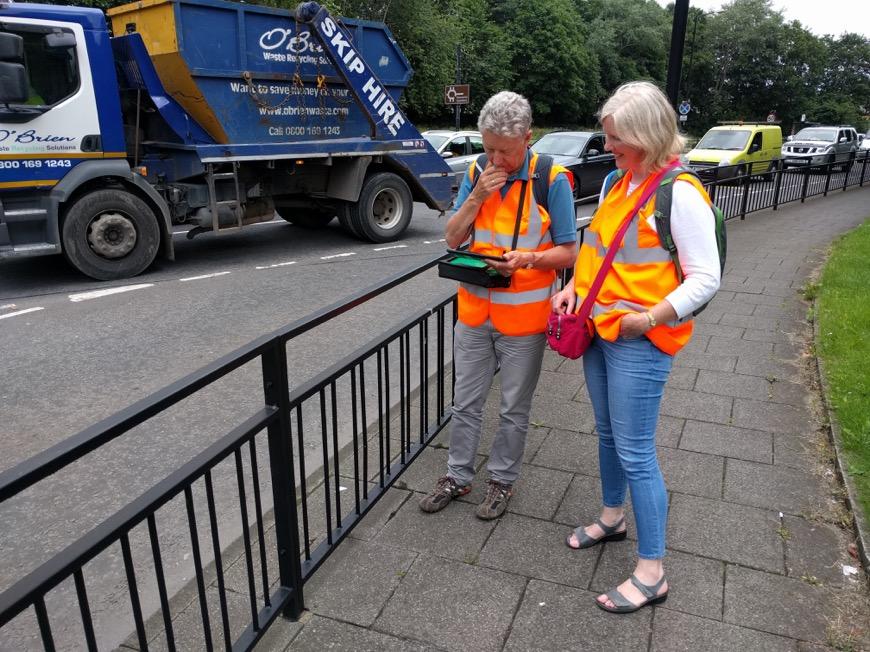WELCOME TO THE CITY OF LONGEVITY. An overview.













Foreword
Welcome to the City of Longevity
The role of cities in a society of longevity
The City of Longevity: what is it?
Basic concepts: the city as a discreet partner
The city of longevity is measurable (and therefore evolves on data)
Involving citizens systematically (instead of an imposition, a joy)
Life? It happens simultaneously: introducing an evolutive, multidimensional model
References
2008 50%
Today more than 50% of people aged 60 live in an urban environment, and this percentage is expected to increase.2

The collective participation of citizens - no matter how little or large – in the creation and development of city policies is integral to the meaningful application of ideas and change within cities. These communities also serve as a robust network to monitor and evaluate policy application, bringing together a variety of ‘on-theground’ viewpoints to foster success.

Involving several global partners, NICA began developing in December 2019 what would later become the City of Longevity framework of which you will read a brief introduction in this document.
NICA submitted the “City of Longevity” project to MIPIM 2021 as the most innovative city prize. The proposal has been selected as one of the four finalists. The evolved framework has been formally presented at MIPIM 2022 in Cannes and chosen to be presented at the Barcelona SmartCity Expo World Congress on November 15-17, 2022.
The City of Longevity was awarded the SilverEco Award in 2022, and presented at the Global Longevity Roadmap in Riyadh in February 2023.
Mk Marketing
We need narratives to share and support new models as well as engage residents and tourists; therefore, marketing and storytelling are critical components to the City of Longevity.

We have to solve an extraordinarily complex problem, which can be expressed with disarming simplicity: now that we can live longer, how can we live better?

We need a profound change of mentality. Because the answer lies in understanding the processes of ageing itself and how to influence them to our advantage, and to do this we must go beyond our traditional domains of knowledge so vertical and unwilling to dialogue with others, so jealous of their centrality. We must embrace an articulate, multidimensional and simultaneous vision – life happens to us all together, not one piece at a time –of what that "better living" means and what it implies.
After all, we don't ask for much: spend time with family or friends, sleep well, have a decent salary, maybe feel fit. It is enough for us to be respected for who we are. It is enough for us to be considered according to those values of dignity that we would like to be recognized now also to our parents, our children, their children.
Yet, all this simplicity is terribly complex to achieve because it has to do with those tiny, huge things that life implies, including the fear we have of becoming what we never imagined to be. Growing old is one of the few things for which we have some certainty and for which we do nothing to prepare. Terrified of a culture of contempt. Immersed in our own unconscious rejection against those we will become.
Cities have the burden and honour of hosting us to build a future that is already present. They can become the best possible companion along this journey that – in some way – implies a new social pact so evident that it can no longer be ignored: that between generations. And they can do more than just host us. They can inspire us to build that model so articulated that only those who are in the depths of our lives twenty-four hours a day can afford.
for recommendations is now marked by the implementing them. To live better, not necessarily longer. We know that our longevity is not regulated by ourselves or by particularly or visionary mayors. But helping them help the right thing to do today.
Welcome to the City of Longevity.

Over the past decade, there has been much work on making towns and cities age-friendly. But a city isn’t an age-friendly city if it doesn’t work for all ages after 6pm. The high street, planners and retailers, can play a part in supporting healthy ageing, but we can’t limit that role to 9am-5pm 3

The need for a critical shift from Age Friendly Cities to Longevity Cities is also enshrined in the cities' mission. As Michael Lyons says:
"Local government is not an agency responsible for providing a specific set of mandatory services. It is rather a unit of government, responsible for the wellbeing of a community and a place, independent of the wider system of government, but at the same time connected to it”.
The commitment to improve health and well-being is at the heart of the work of all local administrations. Not that it hasn't always been this way. Without disturbing the Greek polis and its original mission of "good living" given to politics (and therefore to the city and its government), since the Victorian public health laws, the local governments had the main responsibility for the health and well-being of the population. This is still reflected in the Ciceronian motto taken from De Legibus carved on the effigies of several English City Councils or at the entrance to the parliaments of different countries: "Salus populi suprema lex esto". "The health and welfare of the people should be the highest law."
Health improvement in the Victorian era focused on the development of sanitation, living and working conditions, and the fight against infectious diseases. So, who, if not local government, was and is best placed to put it into practice? If only for a mere reason of proximity. And since then, this city/citizen relationship has constantly evolved into the increasingly intricate network of services, data, relationships, and points of contact that the city carries out for us, with us who inhabit it. The city has always had and has that decisive role in triggering and guiding the determinants that influence our health, but which have mostly been considered, instead, or part of finally lists of recommendations without any logic of implementation or ancillary to the emergency priorities of the infinite crises through which we have passed, from the vast majority of
thought and policies.
In light of the transition to a society of longevity, the city, today more than ever, can and must amplify the role of "champion of prevention" that it already historically plays (for example, when dealing with the sexual health of children or, or substance abuse, or the diet of children in school cafeterias that today concerns not only the portions of fruit and vegetables but also – to say – the environmental impact with "the 20% reduction in CO2 emissions of school menu") and be the partner and facilitator of citizens in the path to their longevity. Communities can only be improved if we address all the determinants of health and work to ensure behavioural change and provide good quality care. We have learnt that it is meaningless to merely treat people for a health condition if we do not address the causes of that condition and actively try not only to counteract them but also and above all, to prevent them. And the city is the avant-garde laboratory to implement this action.
So how to evolve to bring cities to become an active element in promoting longevity even in countries where these essential elements are culturally lacking? Can these elements become exportable and systematised through different cultural backgrounds? Are they measurable beyond (or well within) the axis of the statistical census that determines life expectancy trajectories? What techniques are necessary to involve the whole population without taxation or patronising? What role does technology have and will have to maximise and accelerate the adoption of this context? How can we harmonise the genetic code and postal code to mitigate inequalities? Are only the "residents" the beneficiaries of these policies? Can commuters or tourists be part of them? What are economical and climate sustainability? Has a systematic and targeted project been implemented based on scientific evidence and culturally adaptive and dynamic actions to change behaviours by exploiting social dynamics?

• An evidence-based* and open-source set of action principles and KPIs for cities to help citizens and tourists live longer, healthier lives by promoting cultural and heritage-wise behavioural triggers delivered through existing infrastructure and dayto-day touchpoints.
• Leveraging healthy lifestyles as a driver for the local economy
• Involve local intelligence to develop Cites’ vocation and a touristic offering
• Supporting behavioural change through knowledge, fun, engagement and discovery
• Democratizing access to a healthier life, lowering inequalities
• Apply a novel data-driven approach to engage citizens, and measure impact and progress over time.
Ageing does not begin when a population becomes old. Social cohesion, enhanced by intergenerational ties and the creation of opportunities for involvement and targeted engagement of older people at family, community and social levels, is the platform to build the city's future layers.


The city is not an abstract entity or a simple urban or administrative concept. The city is alive. Beyond the dozens of administrations or agencies that manage it, the city is an identity made by its communities. It is a daily interface that interprets and connects the human with services, with the environment, with decision makers.
As such, it is a body to which the task of responding in a very tangible, "physical" way to the question is delegated: which investments will produce the most significant returns for the most significant number of people over the next few centuries? While it is true that central governments dictate the lines on health policies or tax breaks, say, to renovate an apartment building, it is also true that that apartment building exists, is inhabited, and occupies land in a city.
The City of Longevity is about behaviours (and trying to influence them).
In other words, choices must be put into practice in everyday life, and that daily life is represented have seen in an ever-increasing way – by cities and their inhabitants. The city is a translator, and its translation has delegated the possibility of changing the trajectory of the life of people through everyday activities. And to do so, we believe the city must be an active and discreet partner in supporting citizens of all generations and social and economic conditions to live longer and healthier lives.
Unlike previous models, the City of Longevity is an actor that actively promotes longevity rather than adapting to it. It is an active part of it and not a passive architecture.
13 kcal
We have evidence of how lifestyle choices are policy of prevention and longevity, and it makes solve a problem if we do not help to solve its lifestyles are systematically and wisely promoted channels of contact – private and public – between and cities, according to their abilities, desires,
kcal

kcal per person young people the number of obesity in the or 7%.4
are the basis of a makes little sense to its causes. Healthy promoted through all between citizens desires, and life stages 5
There is no City of Longevity without a way to measure it. What would be the point of proposing interventions for our longevity if we could not understand their impact and how to improve it?



Thanks to sensors, connected devices, crowdsourced data and – moreover – the increasing capacity of software to analyse and give meaning to the continuous flow of data generated, we can now envision how we can help citizens live healthier longer lives without relying on raw demographic data.

More and more personal and social contexts are measurable, and new technologies suggest how to gather them and – ethically – leverage them for better decision making.
Three considerations above all:
• We need new technologies to measure and understand the city. The resolution of satellite images, the ability to “see” other data in addition to pure orography, the construction of models using generative neural networks, data-driven modelling of what-if scenarios, and data from the entire ecosystem of the Internet of Things, open up possibilities that can only be guessed only a few years ago and that today are in the public domain.
• Proper data visualisation will be a mandatory requirement of the City of Longevity: we should use data to engage citizens to be part of this mission, and there is nothing like seeing and, above all, understanding application in real context to engage us to be part of the journey.
• If the City of Longevity is made of data, it will also be necessary to systematise the skills to interpret and maximise them. Data-viz software, blockchain, causal inference, or digital twins, to name four of the dozens of enablers – as well as the experts capable of exploiting them - will be crucial to the success of the City.
The city of longevity is measurable (and therefore evolves on data).
Health is determined by 60% of individual behaviours (36%) and social circumstances (24%).6
Although the relationship between happiness (subjective well-being, happiness, debatable, the evidence shows that unhappy people die younger. Happiness broad effects of interventions in citizens’ life. In addition to existing happiness countries” or the Eurostat “Life satisfaction survey”, the growing capacity of people opens the door to more sophisticated, punctual and dynamic analysis, self-reported feelings. Cities have the possibility to capture opportunities and support solutions 8


Age groups 35-49, 50-64, and 65-74 years old declared it was necessary (58-59%) the ability to influence decisions in the local area.7
happiness, life satisfaction) and longevity is still Happiness remains an overall KPI to measure the happiness tools like the “World’s happiest of cognitive computing to interpret the feelings analysis, able to add quantitative dimensions to and challenges in a pragmatic way and
Hp Happiness
Too often, citizens are only involved in one-off situations rather than in a systematic participative model. This is undoubtedly one of the reasons that led us to put patches where we could have proposed effective prevention solutions instead. This is linked to several factors: from the lack of a culture of co-engagement to a lack of tools to do so.

The City of Longevity is based not so much on simply listening, as on systematic co-design - following these suggestions.
• Formally consider any city as “a living lab”.
• Define the ”citizens” better. The City of Longevity will engage residents, commuters, tourists, visitors, students, and communities in co-innovation, respecting their roles, needs, desires, contexts and experiences.
• It is crucial to give a formal role to the people of any generation through the development of modern, flexible, encouraged engagement systems, not only and not necessarily dedicated to the theme of the city. Recruiting participants interested in contributing should be one of the first actions on the agenda.


• Leverage existing touch points creatively. Avoiding adding infrastructure but capitalising on existing ones is a crucial principle.
• Develop a visible, credible, and trustable digital engagement infrastructure to encourage participation and a reward logic spanning tangible assets to values.
• Allow participants to own their data and provide rewarded consent on demand.
• Develop a knowledge database to be processed using machine learning techniques allowing to the interpretation of data (qualitative feedback, statistical aggregations, sentiment) and providing a natural flow to accelerate the dynamics of co-innovation and opportunities of choice. Creating synthetic data pools will allow cities to develop and exchange training models in a faster, ethical, usable way.
Involving citizens systematically (instead of an imposition, a joy).
While developing a framework for the City of Longevity, we realised that the usual current models (classically a circular looping model with the city and not the citizens at the centre) were barely descriptive or representative of a flow.
However, none met the evolutionary and interconnected longevity requirements and thus be more usable, comprehensive, flexible, adaptable, playable, dynamic and multidimensional. Life does not follow a specific flow, as events occur in overlapping contexts.
We needed a model that could also help policymakers, researchers, and city managers, to “play with” to allow the exploration of possible solutions we can only envision but require creativity, knowledge, and exploration. A tool could enable them to develop new solutions (like formulas) by combining evidencebased elements in a guided process, but free enough to allow them to change, improve it and go beyond a dogmatic approach providing practical suggestions on what to do.
Therefore, we thought that a “periodic table–like” conceptual model, which represents the universe through the infinite combinations of a mainly pre-fab - yet evolving - set of core elements, was the correct way to describe our aim.
The following is the work in progress of this approach based on three stages.
Stage 1: framework and modular tool

Future stages
Stage 2: Longevity Programming Interfaces (LPI)
Stage 3: Neural model
Above:
draft representation of the whole model. Always putting beneficiaries at the centre, the tool maps all the components at a glance, helping decision-makers with a landscape approach. Each element contains evidence, principles and how-to suggestions.
It happens simultaneously: introducing an evolutive, multidimensional model.
To Tourists
Stage 1: Framework and modular tool: building the City of Longevity in a participatory way.
You will have noticed along this document the presence of hexagon-shaped markers. These are a selection of the elements that make up the City of Longevity model.
Its purpose is to become a dynamic, flexible and modular tool to allow city managers to design longevity solutions in the form of recipes (or “formulae”) to be drafted, deployed, measured and then shared with other city managers, researchers, policymakers, and city councils.
We are following the same APIs (Application Programming Interfaces) logic and building a new entity named LPI™ (Longevity Application Interfaces) that will be released in Stage 2. The purpose is to build a shared language to enable faster and more constructive exchange of good longevity practices according to shared criteria and consistent measurement systems.
Following the conceptual approach of the periodic table, elements are added as their existence and evidence (and, in our case, definition or necessity too) is determined, effectively making the model flexible to maintain its purpose of evolving, longevity being our axis of reference.
Drivers
Above:
the five main domains containing the elements in the first instance of the framework.
Below:
is a simplified example of how the model can be used.
This “formula” shows how to use the tool to develop a solution that stimulates the social participation of tourists by influencing lifestyles during typical evening entertainment interaction channels through intergenerational engagement. It aims to measure the return on happiness of tourists and residents and promote it in a marketing campaign.
• The New Map of Life developed by the Stanford Centre on Longevity
• Global Roadmap for Healthy Longevity initiative launched by the National Academy of Medicine (NAM)
• The model of an exposome vision of longevity is suggested by the blueprint Quantum Healthy Longevity for healthy people, planet, and growth
• Identifying the most promising population preventive interventions to add five years to healthy life expectancy by 2035, and reduce the gap between the rich and the poor in England
• (1, 2)
https://population.un.org/wup/
• (3)
https://ilcuk.org.uk/could-older-consumers-drive-alongevity-dividend-for-the-night-time-economy/
• (4)
https://www.repository.cam.ac.uk/bitstream/handle/1 810/294711/Short%20Report%20Increasing%20Heal thy%20Life%20Exepctancy%20Equitably%2020%20A pril%202019%20.pdf?sequence=1&isAllowed=y
• (5)
https://www.local.gov.uk/sites/default/files/document s/22.52%20Social%20Determinants%20of%20Health _05_0.pdf
• (6)
https://www.goinvo.com/vision/determinants-ofhealth/?utm_source=determinantsofhealth.org&utm_ medium=redirect
• (7)
https://www.gov.uk/government/statistics/communitylife-survey-202021-civic-engagement-and-socialaction/civic-engagement-and-social-actioncommunity-life-survey-202021
• (8)
https://www.oecd.org/general/focus/happinessis.htm
Each image contained within is copyright protected and remains the property of the originator.
Ageing Intelligence®, VOICE®, Internet of Caring things®, Horizoning®, City of Longevity®, Longevity Application Interface™ are registered trademarks.
Other names or trademarks are the property of their owners unless specified.
This work is licensed under a Creative Commons Attribution-NonCommercial-ShareAlike 4.0 International License.





